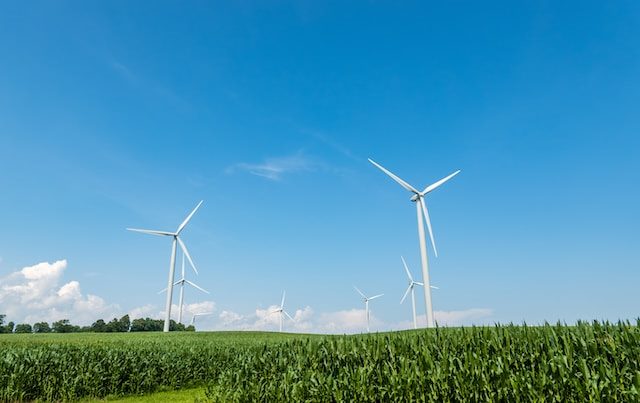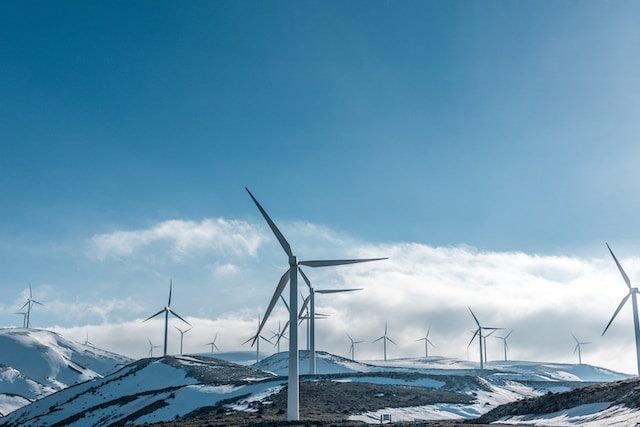
Welcome to our blog post on wind turbines and microgeneration! In this article, we will explore the integration of wind turbines in artistic and architectural designs. We’ll dive into the basics of wind energy, discuss the benefits of microgeneration, and showcase some innovative examples of artistic and architectural integration. Let’s get started!
1. Understanding Wind Energy
Wind energy is a sustainable and renewable source of power that harnesses the kinetic energy of the wind and converts it into electricity. Wind turbines, also known as wind generators, are the devices that capture the wind’s energy and generate electricity. They consist of a rotor with blades, a nacelle where the generator is housed, and a tower that supports the turbine.
1.1 How Wind Turbines Work
When the wind blows, it causes the rotor blades to spin. This rotational motion is transferred to a generator inside the nacelle, which converts the mechanical energy into electrical energy. The electricity generated can be used to power homes, businesses, and even entire communities.
1.2 Advantages of Wind Energy
There are several advantages to using wind energy:
- Renewable: Wind energy is abundant and will never run out.
- Sustainable: Wind power does not produce greenhouse gas emissions or contribute to air pollution.
- Low Operational Costs: Once a wind turbine is installed, the operational costs are relatively low compared to other forms of energy generation.
- Job Creation: The wind energy sector creates job opportunities in manufacturing, installation, and maintenance.
2. Microgeneration and its Benefits
Microgeneration refers to the small-scale production of energy by individuals or communities. It allows people to generate their own electricity using renewable sources, such as wind, solar, or hydro power. Here are some benefits of microgeneration:
2.1 Energy Independence
Microgeneration promotes energy independence, reducing dependence on centralized power grids. Individuals and communities can produce their own energy, reducing their reliance on fossil fuel-based electricity.
2.2 Cost Savings
Generating your own electricity can lead to significant cost savings over time. While the upfront investment may be higher, the long-term savings on energy bills can be substantial. Additionally, surplus energy generated can be sold back to the grid, providing a potential income stream.
2.3 Environmental Impact
Microgeneration plays a crucial role in reducing carbon emissions and combating climate change. By utilizing renewable energy sources, individuals contribute to a cleaner and more sustainable environment.
3. Artistic and Architectural Integration
Wind turbines can be integrated into artistic and architectural designs, enhancing both functionality and aesthetics. Here are a few examples of innovative integration:
3.1 Wind Turbine Sculptures
Artists and sculptors have transformed wind turbines into striking artworks. By incorporating unique designs, colors, and materials, these sculptures not only generate clean energy but also add visual appeal to the surrounding landscape. Wind turbine sculptures can be found in public spaces, parks, and even private gardens.
3.2 Building-Integrated Wind Power
Architects are increasingly incorporating wind turbines into the design of buildings. These turbines can be integrated into the façade, rooftops, or balconies, blending seamlessly with the architectural elements. Building-integrated wind power combines sustainability and functionality, providing a renewable energy source while complementing the overall aesthetic of the structure.
3.3 Wind-Powered Installations
Installations, such as kinetic sculptures and interactive designs, utilize wind energy to create captivating displays. These installations often consist of multiple small-scale wind turbines that work together to create mesmerizing patterns and movements. They can be found in public art installations, museums, and outdoor exhibitions.
4. Conclusion
Wind turbines and microgeneration offer exciting possibilities for artistic and architectural integration. By incorporating wind power into designs, we not only harness clean energy but also create visually appealing and sustainable structures. Whether it’s through wind turbine sculptures, building-integrated wind power, or wind-powered installations, the integration of wind energy can inspire creativity and promote a greener future.















